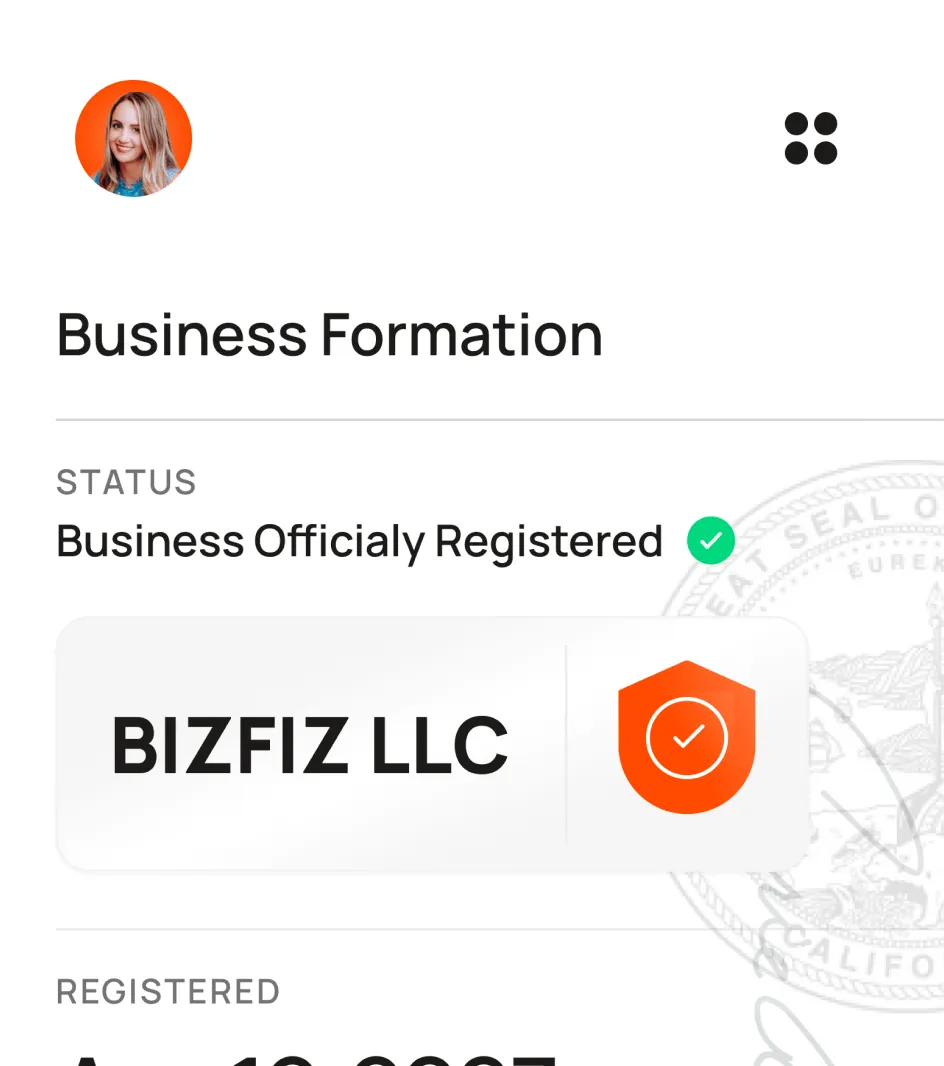

Join 1,000,000+ Entrepreneurs like you
Entrepreneurship is booming – and we're happy to be one of America's fastest growing companies.


On this page
It's no secret that U.S. small businesses are booming: The Census Bureau reports that since 2020, the number of new business applications has experienced a drastic increase.
But what's even more exciting is that women are starting a more significant portion of those businesses. In 2021, for instance, an impressive 49 percent of new business owners were female, compared to just 28 percent in 2019. Best of all, that's just one of many amazing statistics about women in business.
So if you're a woman who's been wanting to start your own business, know you'll be in good company. And with our experience helping over 1,000,000 other entrepreneurs start businesses of their own, we'd be happy to show you how.
1. Determine Your Niche
First, decide which kind of business you want to open and identify the entity type you should file for.
Choose What Type of Women-Owned Business To Open
On the fence about what you want your business to do? We've got some ideas to get those creative juices flowing
For the best possible results, the niche you end up choosing should align with the work environment you want to create and the lifestyle you want to lead.
For instance, if you want to work from home and eliminate your commute, then selling items on Etsy or Amazon might be right up your alley. But if you want to meet new people and collaborate with clients, you might prefer to be an event planner or go into consulting.
If you thoroughly evaluate your wants, needs and goals before making a final decision, you're sure to end up with a niche that works for you.
2. Create a Business Plan
If you want your woman-owned business to flourish in the future, you need to give it a solid foundation today through a thoughtful business plan.
Fortunately, writing a business plan isn't as daunting a task as it may sound. Just be sure to include a few key elements:
Choose What Type of Women-Owned Business To Open
On the fence about what you want your business to do? We've got some ideas to get those creative juices flowing
3. Consider Costs and Get Funding
In a perfect world, starting your dream business wouldn't cost a thing. But the reality is that startup expenses are necessary, so it's crucial to estimate yours carefully.
If it turns out you'll need more money to start your business than you have readily available, don't throw in the towel just yet — there are several funding sources you can use to get the capital you need.
Small Business Administration The U.S. Small Business Administration (SBA) has several resources for women looking to get funding for their businesses:
Amber Grant
First founded in 1998, the Amber Grant gives away tens of thousands of dollars to women-owned businesses each month.
In addition to two $25,000 year-end grants, the organization behind the Amber Grant also awards grants in multiple other categories.
IFundWomen
With a mission to "close the funding gap for women-owned businesses," IFundWomen is a one-stop shop for female entrepreneurs.
Tory Burch Foundation
Through the Tory Burch Foundation, the Tory Burch brand helps women entrepreneurs start and grow their businesses.
Check out the foundation's capital programs and its yearlong Fellows Program to see what type of funding you may be eligible for.
Cartier Women's Initiative
Founded in Paris in 1847, Cartier has become one of the most valuable brands in the world.
And through the Cartier Women's Initiative, the luxury company is making success more accessible for female entrepreneurs. It offers regional awards, a fellowship program and more.
Other Options
Loans and grants offered to women entrepreneurs can be highly competitive, so be sure to consider other options in case your application is rejected or you don't get as much funding as you need.
Alternative options include:
4. Make Your Business Official
Ready to take your woman-owned business from idea to reality? Whether it's a side hustle or a full-time occupation, you can make it official by filing with the government.
Choose a Business Structure
Every business is as unique as the entrepreneur who runs it, so it makes sense that different business structures work for different businesses.When choosing yours, you'll have five main entity types to select from. They include:
For most female entrepreneurs, LLCs strike the perfect balance between easy setup and robust liability protection. If you choose an LLC structure for your woman-owned business (and we recommend you do!), you can form yours with now.
File the Right Forms
More specifically, you'll need to fill out a form called the Articles of Organization if you're opening an LLC or the Articles of Incorporation if you're starting a corporation. Depending on where you live, this form might be called the Articles of Formation, Certificate of Organization or something similar instead.Next, submit the form to your state government. In most states, that means the Secretary of State, though sometimes it's another agency instead.
The fee you'll need to pay will vary, with some states charging as little as $40 and others requiring as much as $500. To find your state's filing fee, check out our state-by-state guide.
Get Certified
Ensure you can access all the resources you need by getting certified as a woman-owned small business (WOSB) or economically disadvantaged woman-owned small business (EDWOSB).
You can do so in one of two ways. Either self-certify using the SBA's certification application program or get certified by an SBA-approved third-party certifier.
There are four such certifiers to choose from:
Alternative options include:
5. Maintain and Grow Your Business
To help your new business thrive and avoid costly penalties, you'll need to perform maintenance on a regular basis.
File Annual Reports
Most states require all businesses to submit an annual report. This will contain updates about any major changes, as well as information about your business's location, management, purpose and more.
Pay Taxes and Manage Finances
As a U.S. business owner, you'll need to pay quarterly estimated taxes and file an annual tax return, as well as any applicable payroll and state taxes.
You'd also be smart to proactively manage your business finances by creating an annual financial plan, keeping a close eye on your cash flow, embracing diversification and more. (Psst: Not a math fan? Our Bookkeeping and Accounting service can help.)
Renew Licenses, Permits and Contracts
If your business requires licenses or permits to operate, you'll need to renew them on a regular basis. The same goes for employee, contractor and supplier agreements, so be sure to mark your calendar accordingly.
Master Your Marketing Strategy
The most successful tactics aren't necessarily the most expensive ones. Effective budget-friendly marketing methods include blogging, offering discounts, social media marketing, email marketing and more — try several to see which ones work best for you.
Keep Your Website Up to Date
Every modern business can benefit from having a high-quality website, yours included. To ensure that your website is always drawing potential customers in, check on your website regularly and update its layout and design elements as needed.

Common Questions About Starting a Woman-Owned Business

You focus on running your business — we'll handle everything else.










